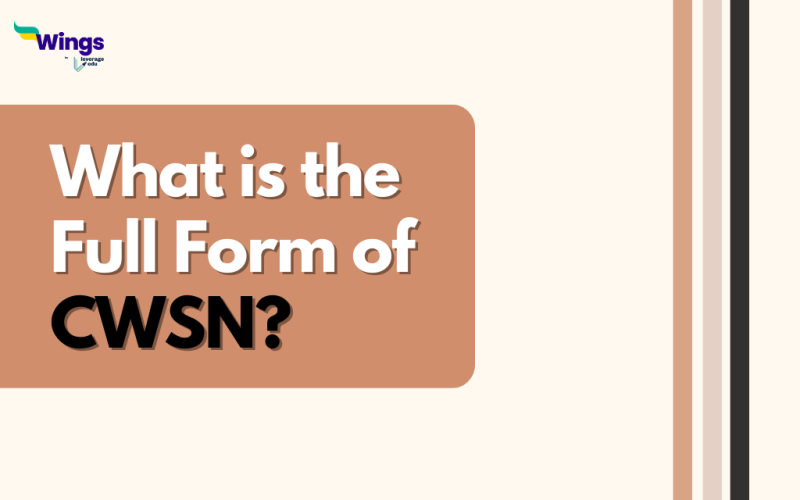CWSN Full Form is Children With Special Needs. It applies to children and teenagers who require assistance in a range of areas, such as education. These children receive special education, which allows them to learn without any problems. As a result, by receiving guidance from teachers who have received special education training, kids can realize their full potential.
Table of Contents [show]
Who is CWSN?
By the type of their disability and the type of care they need as a result, children with special needs can be categorized. Governments also classify people in order to provide further help in the form of prizes and other resources.
Conditions like cerebral palsy, epilepsy, muscular dystrophy, locomotor disability, etc. are considered physical disabilities. Deafness, poor eyesight, hearing loss, and other sensory impairments are examples of sensory impairments. Disorders of development include disorders like Down syndrome and autism. The term “behavioral disability” describes conditions like ADHD or ADD where kids struggle to sustain social bonds and experience anxiety and depression.
Types of Disabilities
The five categories listed below can be used to group disabilities in children or any other individual:
- Children with intellectual disabilities frequently have lower IQs. They struggle to finish their daily activities as a result, and they take their time learning new things.
- Cognitive disorders: Both children and adults might have this ailment at any point in their lives. A brain injury or multiple sclerosis may be to fault.
- Physical impairment: The neurological, circulatory, or respiratory systems are most frequently harmed by this type of damage.
- Psychiatric impairments cover a variety of mental illnesses, such as depression, anxiety, and others.
- Sensory disabilities include children who have trouble hearing or speaking.
How to help CWSN?
Special educational needs, also known as special educational requirements, are crucial for children who struggle in school or have learning difficulties. These children’s learning capacities are lower than those of other children their age.
- Writing, reading, and conceptual understanding
- They are aware of different points of view.
- making new acquaintances and interacting with them.
- being able to relate to others well.
- They have physical requirements.
Each child develops at a unique rate. While some children make progress straight away, others don’t. The instructor is responsible for making sure the pupils maintain their textbooks and resources. If your child is learning slowly, there must be a problem because teachers can teach children a lot. You can text him separately to encourage him. By giving him a variety of tasks to complete, this teacher can assist your youngster in comprehending why he is learning so slowly.
FAQ
The law mandates free, compulsory elementary education for children with disabilities (6-14 years old) since April 2010.
The Right to Free and Compulsory Education (RTE) Act, 2009 mandates free and compulsory elementary education to all children including CWSN.
Conditions such as Muscular Dystrophy, Epilepsy, Cerebral Palsy, and Locomotor Disability are examples of physical disability.
This was all about the CWSN Full form. Visit the General Knowledge page to discover more intriguing articles about full forms. Get in touch with the experts at Leverage Edu in order to kickstart your study abroad journey.
 One app for all your study abroad needs
One app for all your study abroad needs















 45,000+ students trusted us with their dreams. Take the first step today!
45,000+ students trusted us with their dreams. Take the first step today!
